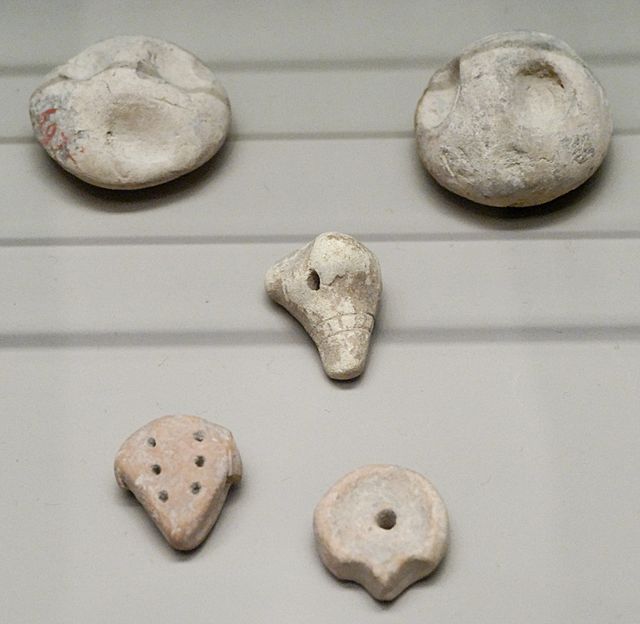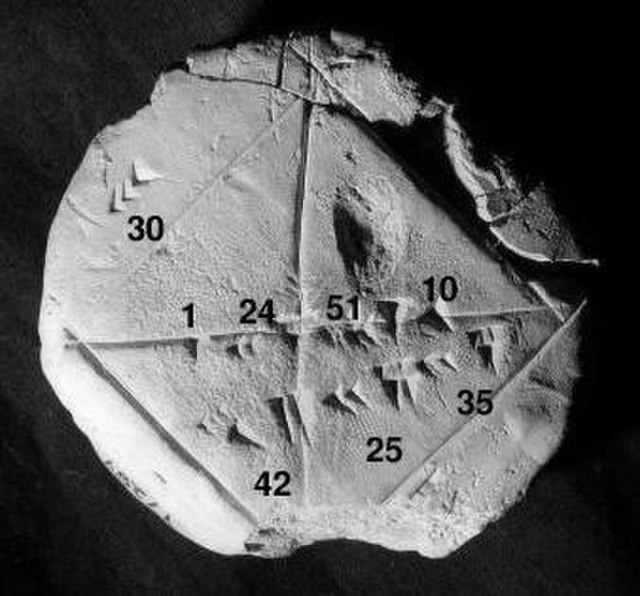A bulla is
an inscribed clay or soft metal or bitumen or wax token used in commercial and legal documentation as a form of authentication and for tamper-proofing whatever is attached to it.
A bulla (or clay envelope) and its contents on display at the Louvre. Uruk period (4000–3100 BC).
Two clay bullae, one complete and sealed, the other broken with tokens visible, Uruk period. Oriental Institute Museum, Chicago.
Clay accounting tokens used inside of a bulla
Babylonian clay tablet YBC 7289 with annotations. The diagonal displays an approximation of the square root of 2 in four sexagesimal figures, 1 24 51 10, which is good to about six decimal digits. 1 + 24/60 + 51/602 + 10/603 = 1.41421296... The tablet also gives an example where one side of the square is 30, and the resulting diagonal is 42 25 35 or 42.4263888...
A papal bull is a type of public decree, letters patent, or charter issued by a pope of the Catholic Church. It is named after the leaden seal (bulla) traditionally appended to authenticate it.
Papal bull of Pope Urban VIII, 1637, sealed with a lead bulla
The apostolic constitution Magni aestimamus issued as a papal bull by Pope Benedict XVI in 2011 which instituted the Military Ordinariate of Bosnia and Herzegovina
Printed text of Pope Leo X's Bull against the errors of Martin Luther, also known as Exsurge Domine, issued in June 1520
Lead bulla (obverse and reverse) of Gregory IX, pope 1227 to 1241








